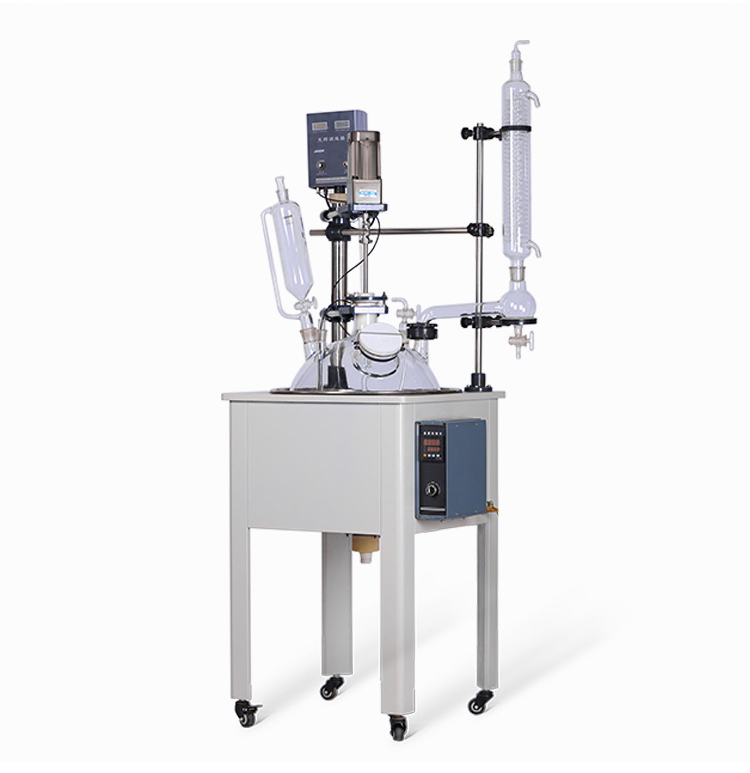What are the factors that cause the double-layer glass reactor to stick to the wall while stirring the material?
Glass reactors are often used in industries such as laboratories, chemicals, pharmaceuticals, and new materials synthesis. We also know that glass reactors are equipment for mixing and stirring materials. Previously, customers with double-layer glass reactors reported to us that when they used a double-layer glass reactor to stir the materials, the materials would stick to the walls of the kettle. I don’t know why this happened, but the quality of the products was not enough. Later, our technicians listened to their operation process before they realized that they were caused by improper operation. So what is the factor that causes the double-layer glass reactor to stick to the wall while stirring the material? Here, the technicians of the double-layer glass reactor manufacturer Keda found three kinds of sticking factors according to the feedback from the glass reactor customers, as follows:
First, the degree of balance of operation
When the temperature, pressure, etc. are unstable or fluctuate too much, the progress of the reaction will be uneven, which will cause the wall of the double-layer glass reactor to stick to the wall. Here, our majority of glass reactor users solve this problem. When using a glass reactor, we should slowly pressurize and heat up to stabilize the temperature and normal pressure fluctuations.
Second, the material is too thick
Whether it is a single-layer glass reactor or a jacketed glass reactor, we know that glass reactors cannot be a single solid agitation. Therefore, the stirring is the mixing of the liquid phase or the mixing of the solid-liquid phase. In this case, the sticking wall is generated, which is most likely because the proportion of the added materials is unbalanced, so that the more the stirring in the glass reactor is stirred, the more the stirring is performed. Sticky, this is one of the factors that cause sticking.
Third, the temperature of the reaction vessel and the temperature of the reaction solution are lower than 80 ° C
When the temperature of the reaction temperature vessel and the reaction liquid of the single-layer glass reactor and the double-layer glass reactor are both lower than 80 ° C, some users will use a catalyst to accelerate the reaction speed, and in the process of accelerating the reaction speed, the PH value It will not be displayed very quickly, and the pH will drop rapidly after the temperature rises. Due to the accelerated reaction rate, the polycondensation reaction is too intense, and the gel is also a factor that causes the glass reactor to stick to the wall.
The above three factors are the factors that cause the double-layer glass reactor to stick to the wall when the material is stirred. As long as the above three are paid attention to during the operation, the sticking phenomenon will not occur.

